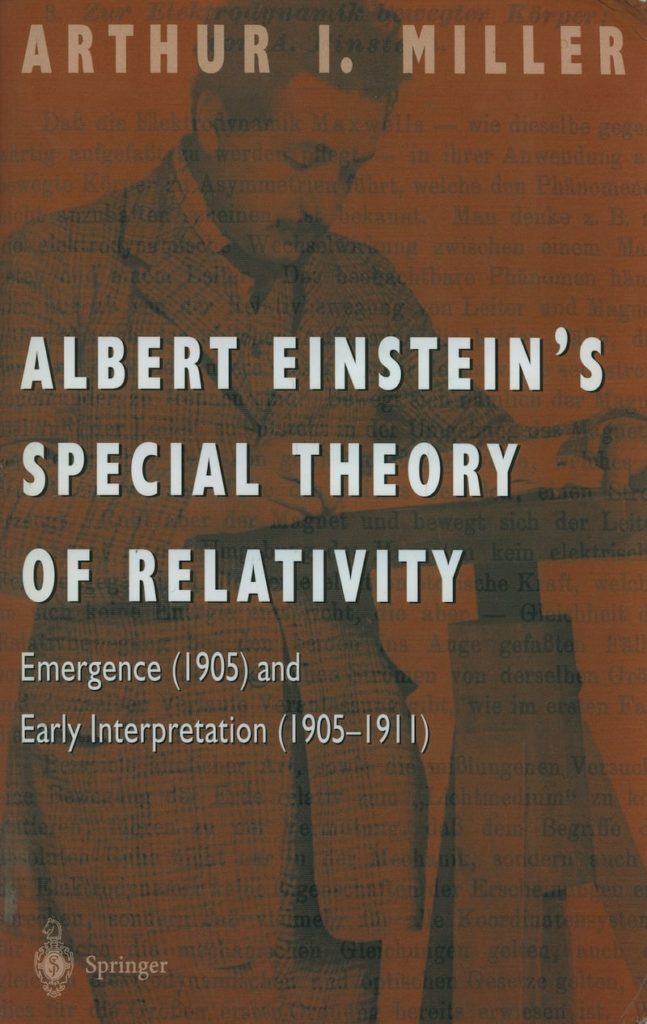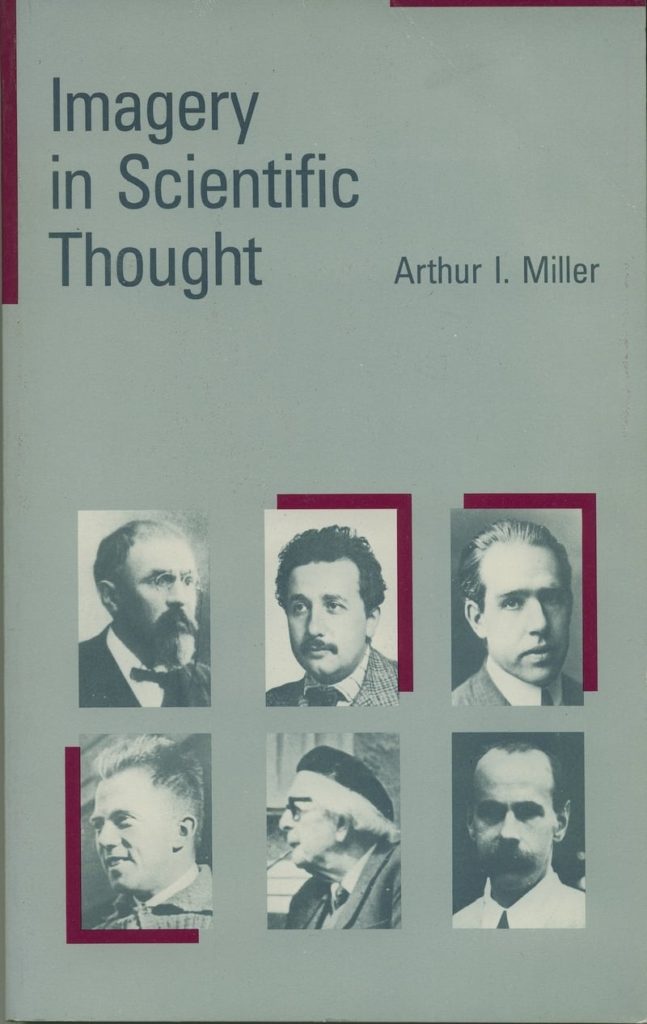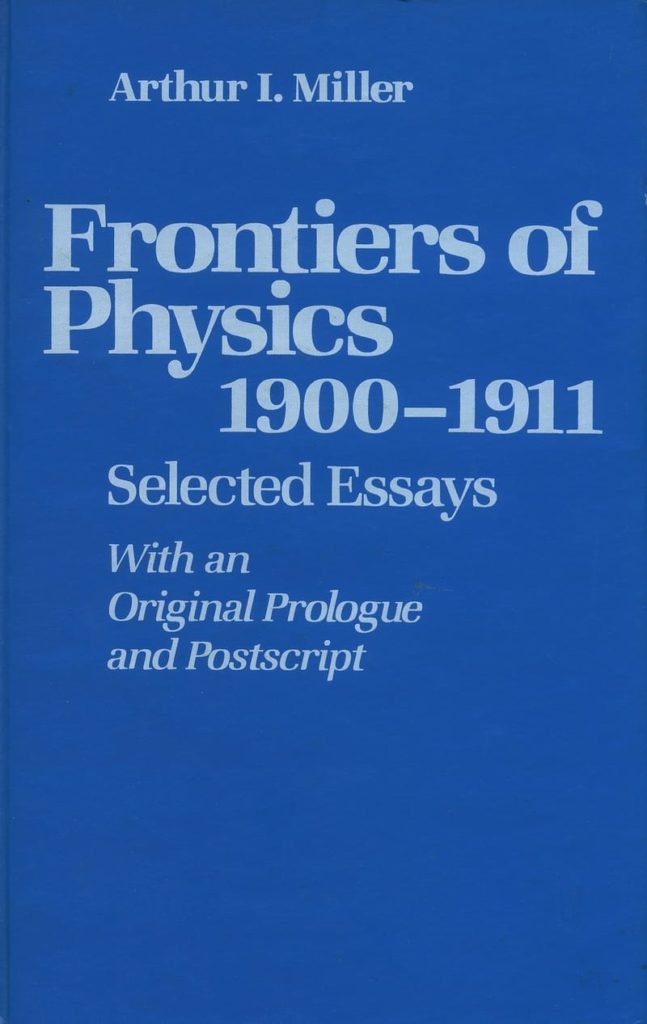
Albert Einstein’s Special Theory of Relativity: Emergence (1905) and Early Interpretation (1905-1911)
[Publication – 1981]
This is the biography of the scientific paper that moved physics into the 20th century. In this line-by-line analysis of Albert Einstein’s 1905 relativity paper, my goal was to use it as a window through which the modern reader could glimpse the intense intellectual struggles of physicists in the first decade of the 20th century. This drama of science in the making centres on the interplay between empirical data and physical theory. At the time scientists were clinging to notions that could not always be articulated clearly or verified experimentally, all the while making a great investment of effort in empirical data and in already existing physical theories, working towards the long-sought-after unification of the sciences.
Reviews
“Miller has written a superb, perhaps definitive, historical study of Einstein’s special theory of relativity…. One comes away from the book with a respect for both the creative genius of the man and his nerve: he simply brushed aside much of the work that was going on around him.”
The New Yorker
“[Philosophers of science] should be urged to pay careful attention to the wealth of material so patiently assembled and clearly presented by Arthur Miller in his authoritative work.”
The British Journal for the Philosophy of Science

Imagery in Scientific Thought: Creating 20th-Century Physics
[Publication – 1984]
What are the origins of scientific concepts? How are scientific concepts transformed as science progresses? What is the role of mental imagery in scientific research? How do scientists create or discover theories?
These problems have long interested scientists and philosophers and, more recently, historians of science as well cognitive scientists. Here, for the first time, the history of science is used as a laboratory for cognitive psychology.
Reviews
“Not since John Livingston Lowe’s famous Road to Xanadu has a book appeared richer than this one of Arthur Miller’s in its allusions to the sources of creativity – this time in the realms of physics and mathematics.”
John A. Wheeler
“The ideas are original and stimulating, the topics fresh and important.”
Gerald Holton
“This fascinating excursion through the history of twentieth-century physics puts cognitive psychology in a new broader perspective.”
Stephen M. Kosslyn
“Miller’s book is a pioneering effort to combine the insights of Max Wertheimer’s Gestalt psychology, Jean Piaget’s genetic epistemology, modern research on mental imagery and other branches of cognitive psychology in explaining the inner workings of the history of physics from about 1900 to 1950. He moves us a long step toward a necessary synthesis of disciplines in trying to understand the interplay of intuition and imagination on one side with conceptual and logical thinking on the other.”
Howard E. Gruber, University of Geneva and Rutgers University
“One of the great mysteries of the human mind is its power to create new forms of knowledge. Arthur I. Miller is a historian of science whose approach has been strongly influenced by current work in cognitive science, and in this book he shows how the two fields might be fruitfully linked to yield new insights into the creative process. The first two sections of this book trace the relationship of creative thinking and the construction of new scientific concepts in the physics of Poincare, Einstein, Boltzmann, Bohr, and Heisenberg (scientists whose research was influenced by their consideration of the nature of thinking itself). These case studies are then used as data to test the attempts of modern psychologists to account for creative development through Gestalt psychology, cognitive science, and genetic epistemology.”
Nature (1984)

Early Quantum Electrodynamics: A Source Book
[Publication – 1994]
This is a panoramic view of the development of quantum electrodynamics, a physical theory that has been on the cutting-edge of theoretical physics ever since P. A. M. Dirac’s quantization of the electromagnetic field in 1927. I include classic papers and an introductory frame-setting essay that emphasises conceptual transformations that carried physicists to the threshold of renormalisation theory.
Reviews
‘Professor Miller has produced yet another remarkable book in the history of modern physics.’
Centaurus
‘This book offers a valuable and previously unavailable entrée into the history of an important and difficult part of theoretical physics.’
Isis

Sixty-Two Years of Uncertainty: Historical, Philosophical and Physical Inquiries into the Foundations of Quantum Mechanics
[Publication – 1990]
I edited and contributed to this volume, which is the proceedings of the International School of History of Science, convened at Erice, Sicily, 5-15 August 1989. We often read that in 1927 the formalism and interpretation of nonrelativistic quantum mechanics was firmly settled and etched in stone as the Copenhagen Interpretation. Most physicists considered the ensuing Bohr-Einstein debates as heroic tales set in the distant past of our culture. Yet sixty-two years after the publication of Werner Heisenberg’s paper on his uncertainty principle there is a sizable group of scholars who rightly consider that certain fundamental issues of quantum mechanics remain unsettled.

Frontiers of Physics: 1900-1911
[Publication – 1986]
Physicists in 1905 were after bigger game than a theory of space and time rooted in kinematics. Like today, the frontier of physics was the quest for a unified description of the forces that were then known – electromagnetism and gravitation. Physicists such as Max Abraham, H.A. Lorentz, Max Planck, and Henri Poincaré were optimistic about achieving this goal. In this book I tell the story of struggles, methods, and intent, and of Albert Einstein, Patent Clerk Third Class in Berne who that same year published his own take, a view that would not be fully understood until 1911.
These essays explore the rich traditions in electrodynamics, electrical engineering and mathematics on which the physicists of 1905, Einstein included, based their conceptions.